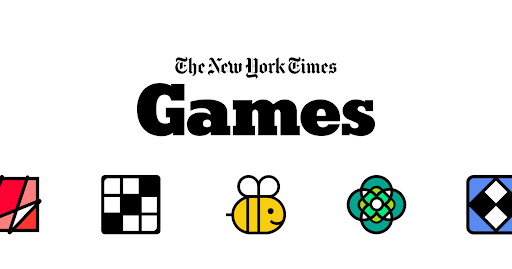In an era dominated by video games and virtual realities, the straightforward puzzles and games from The New York Times stand out with their broad appeal. These games are simple, yet they attract a diverse crowd, including many who previously showed little interest in similar pastimes. Despite their apparent simplicity, these puzzles manage to engage a wide spectrum of players, transcending age, background, and experience.

Photo courtesy of The New York Times
Unlike many mobile games that aim to keep players hooked for as long as possible to maximize ad revenue, The Times’ games take a contrasting approach. NYT’s head of games Jonathan Knight emphasizes their intention not to monopolize players’ time but rather to seamlessly integrate into their daily routines, asserting “We’re not trying to get you to spend 24/7 in our app; we’re not trying to get you addicted to solving level after level after level” (Axios). The Times’ games aim to fit into players’ lives rather than consume them entirely. This strategy has resonated strongly with audiences— in fact, “the company’s subscription revenue increased nearly 10% to $418.6 million in the third quarter of 2023 — with digital product earnings rising nearly 16%, to $282.2 million, driven in part by bundles” (Axios).
In addition to seamlessly integrating into individuals’ lives rather than demanding constant attention, the Times’ games stand out due to their dynamic and ever-evolving nature. Unlike the repetitive and formulaic design seen in many popular mobile games, The Times’ games offer a fresh challenge each day. Senior Tanush Sistla believes that the success of these games can be attributed to the fact that they present “something that’s new every single day” (The Cardinal Times). This is especially evident in games like the crossword puzzle and Wordle, where each day’s puzzle is different from the last. Wordle presents a new five-letter word challenge every day, requiring players to use their vocabulary knowledge to figure out the word within six guesses. However, the novelty of each day’s word keeps players eager to test their skills against a new puzzle coming back, ensuring continued interest.
The Times’ games department was originally just the crossword puzzle, a beloved feature that has been part of the publication since World War II, originally created to “give people some joy in the midst of very dire news” (NPR). Recognizing the power of this audience, The Times expanded its offerings to include a variety of puzzles and games, leveraging its strong brand association it gained with the crossword. Jonathan Knight emphasizes that puzzles are now a crucial part of The Times’ strategy to be the essential subscription for curious people seeking to engage with and understand the world. (Eurogamer). Recognizing the enduring appeal of puzzles, dating back to the traditional Sunday paper,
The evolution of The Times’ games department depicts the publication’s shift towards offering a comprehensive lifestyle experience beyond just news content. Jonathan Knight mentions how the transition from the traditional newspaper to digital news was initially seen as an existential crisis for many newspapers. However, they made a significant investment in digital subscriptions, betting that people would pay for quality journalism, which has proven successful. Nevertheless, the focus on just the news product may have been too narrow, prompting the realization that a broader lifestyle offering is necessary. The New York Times now offers more than just the news; it engages with readers’ passions. From a business standpoint, subscribers who engage with multiple products, such as news and games, show better long-term retention rates (Eurogamer).
The success of The New York Times’ approach to games highlights the importance of diversifying content to better appeal to audiences. By seamlessly incorporating puzzles and games into their daily offerings, The Times has not only created a reason for subscribers to return each day but has also reinforced the value of their digital subscription model, exemplifying how traditional media can thrive in the digital age by adapting to new user preferences.




























